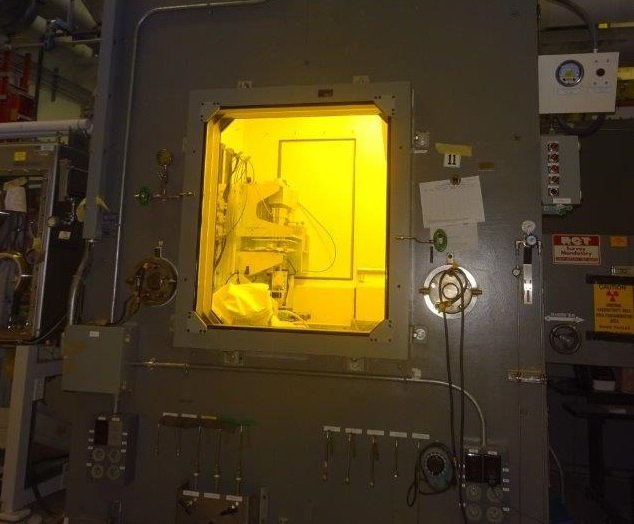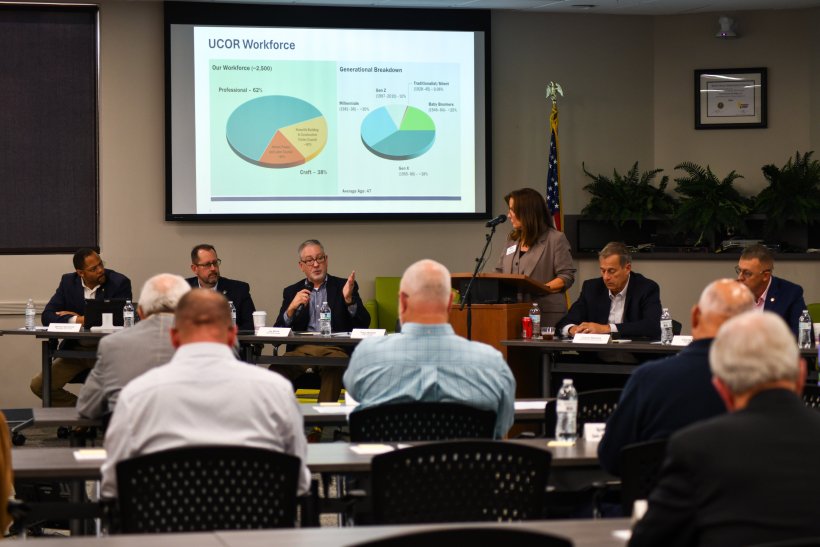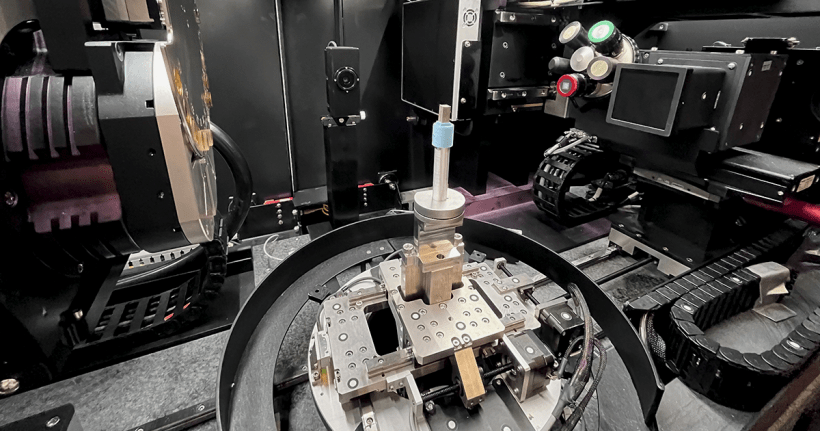The Diablo Canyon ISFSI cask loading team from Holtec, PG&E, and Diablo Canyon. (Photo: Holtec)
Holtec International announced that it has completed the campaign to transfer Diablo Canyon’s spent nuclear to dry storage ahead of its planned schedule, paving the way for the continued operation of the central California nuclear power plant.
COP29 takes place November 11–22, in Baku, Azerbaijan. (Photo: Adobe Stock)
As COP29 kicked off November 11, industry advocates worldwide are hoping to draw attention and increase buy-in to the need for more nuclear capacity.
A 3D, semitransparent model of the TMI-2 reactor building is helping planners and workers visualize the work to be done in the radiologically controlled building. (All photos: Tim Gregoire)
Constellation Energy has announced that it will seek to restart Unit 1 of the Three Mile Island nuclear power plant in Pennsylvania as part of an agreement with Microsoft to power that company’s data centers. Given the growing interest by tech companies in using clean, reliable nuclear power to meet their growing energy demands, the September 20 announcement to reopen TMI-1, which was shut down and defueled in 2019, was not a huge surprise.
The H9 Hall thruster, developed at UMich’s Plasmadynamics and Electric Propulsion Laboratory. (Image: William Hurley/University of Michigan)
Seeking spacecraft that can “maneuver without regret,” the U.S. Space Force is investing $35 million in a national research team led by the University of Michigan to develop a spacecraft with an onboard microreactor to produce electricity, with some of that electricity used for propulsion. But this spacecraft would not be solely dependent on nuclear electric propulsion—it would also feature a conventional chemical rocket to increase thrust when needed.
A technician prepares salts for use in MSRE in 1964. (Photo: ORNL)
FLiBe—a mixture of lithium fluoride and beryllium fluoride—is not an off-the-shelf commodity. The Department of Energy suspects that researchers and reactor developers may have a use for the 2,000 kilograms of fluoride-based salt that once ran through the secondary coolant loop of the Molten Salt Reactor Experiment (MSRE) at Oak Ridge National Laboratory.
OREM manager Jay Mullis (center) discusses the demographics of the current Oak Ridge workforce and the skills needed in the years ahead to advance cleanup at ORNL and the Y-12 National Security Complex. (Photo: DOE)
Federal and contractor officials, community leaders, and educators gathered in Knoxville, Tenn., on October 29 for a roundtable event focused on ensuring the Oak Ridge Office of Environmental Management (OREM) and its partners have the resources and infrastructure needed to support a robust, talented workforce in the years ahead.
President Yuk-Seol Yoon (center) attends a ground-breaking ceremony for Shin-Hanul Units 3 and 4. (Photo: South Korea presidential office)
The U.S. and South Korea have reached a provisional agreement and are working on a memorandum of understanding to advance the countries’ partnership on civil nuclear energy.
SRNS’s Erika Baeza-Wisdom gives an overview of SRNS pit production to UTEP students. (Photo: SRNS)
Savannah River Nuclear Solutions (SRNS), the managing and operating contractor at the Department of Energy’s Savannah River Site in South Carolina, and the DOE’s Los Alamos National Laboratory in New Mexico are partnering with multiple universities to develop next-generation technology and personnel pipelines to advance the DOE National Nuclear Security Administration’s two-site pit production mission.
Chapman (left) and Methven at the West Burton power station. (Photo: UKIFS)
Leadership of the United Kingdom’s STEP (Spherical Tokamak for Energy Production) fusion program has transitioned to U.K. Industrial Fusion Solutions Ltd. (UKIFS), a wholly owned subsidiary of the U.K. Atomic Energy Authority (UKAEA). UKIFS was established in February 2023 to lead a public-private partnership that will design, build, and operate the STEP prototype fusion energy plant in Nottinghamshire in England’s East Midlands region.
The Diablo Canyon plant. (Photo: Doc Searles)
The Nuclear Regulatory Commission is asking for public comment on its draft supplemental environmental impact statement for Diablo Canyon’s license renewal request.
An enhanced CT scan process developed at ORNL can cut the time required to examine 3D-printed parts by one sixth. (Image: DOE)
A software algorithm developed at Oak Ridge National Laboratory has reduced the time needed to inspect 3D-printed parts for nuclear applications by 85 percent, the Department of Energy announced on November 1, and that algorithm is now being trained to analyze irradiated materials and nuclear fuel at Idaho National Laboratory.
 As the United Nations’ COP29 climate summit kicked off this week, President Biden’s administration laid out plans to add 200 GW of nuclear power in the next 25 years through a combination of new reactor deployment, plant restarts, and upgrades at existing sites.
As the United Nations’ COP29 climate summit kicked off this week, President Biden’s administration laid out plans to add 200 GW of nuclear power in the next 25 years through a combination of new reactor deployment, plant restarts, and upgrades at existing sites.














.jpg)




